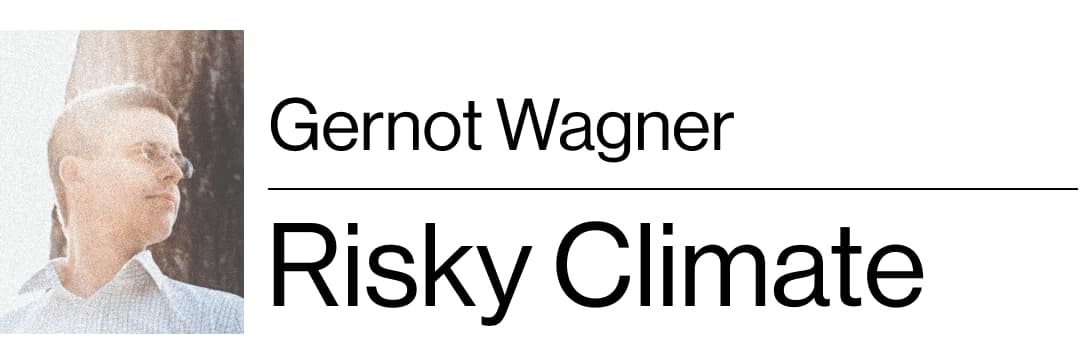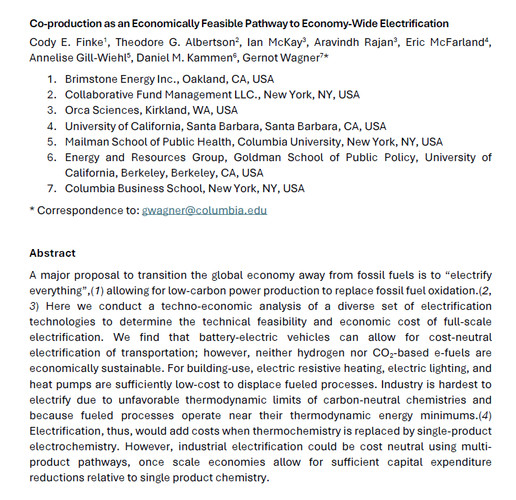Why the Biden Administration Should Propose Carbon Tariffs
Assessing tariffs based on the carbon content of goods is complicated, but will lead to stronger climate policy and better economic outcomes.

Read the full Risky Climate column at Bloomberg Green.
Trade is good, tariffs costly. Few economic beliefs are quite as strongly held. That makes the discussions around carbon tariffs the latest clash of “economics versus the climate.” Critics might think it’s fine to price carbon and otherwise support clean alternatives domestically and abroad, but to assess tariffs based on the carbon content of traded goods is complex, costly, and a step too far.
Avoiding this clash is also a big part of why U.S. climate envoy John Kerry has recently stated how carbon tariffs are not currently a formal U.S. policy position, despite the Biden administration’s otherwise “all-of-government” approach to tackling the climate crisis. Carbon tariffs do indeed come with costs, but they should still be on the policy table, including at the Earth Day climate summit at the White House on April 22.
Not all tariffs are bad. Alexander Hamilton first formulated a prominent exception to that general rule, in 1791: infant industry protection. Tariffs would be justified to protect fledgling industries in the early days of the United States from being usurped by well-established British competitors. John Stuart Mill reaffirmed these arguments in his Principles of Political Economy, in 1848. Mill, one of the founding fathers of liberalism and otherwise an avowed free trade advocate, argued for the importance of positive external effects: learning by doing. These arguments have since evolved but have otherwise withstood the test of time as the one exception to the “trade good, tariffs bad” refrain.
Enter carbon, and Yale economist Bill Nordhaus. In 2015, he dedicated his presidential address to the members of the American Economic Association to what he dubbed “climate clubs”: a set of countries, the “club,” goes it alone on more ambitious climate policy in an effort to overcome the impasse of global climate negotiations. His idea to make the club stick: tariffs.
Nordhaus was not the first, nor the only one, to suggest as much. Among economists, he was the most prominent, and the 2018 Nobel Prize he shared added to his advocacy for the idea. He calculates the tariff to be relatively modest, a 3% penalty linked to a $50 price per ton of CO₂. Whether that is expensive is in the eye of the beholder. Nordhaus says that his own thinking on the right policy mix has evolved; he now emphasizes how a big push on clean energy investments could yield big payoffs. It is clear that carbon taxes alone aren’t good enough. One prominent reason why is learning by doing, echoing Mill’s argument. For climate policy, these learning-by-doing effects call for direct subsidies for research and development, to say nothing of deployment, demonstration, and diffusion.
The proposal of carbon tariffs has found resonance. The EU is contemplating proposing a version of them as early as this spring, a step that prompted Kerry’s rejoinder. Despite the apparent formal U.S. government position to the contrary, carbon tariffs are being debated inside the administration. President Joe Biden included them as part of his campaign’s climate platform, dubbed “carbon adjustment fees” or quotas, levied on carbon-intensive goods “from countries that are failing to meet their climate and environmental obligations.”
Well-implemented carbon tariffs would be a good idea, not least because they turn the usual unfortunate logic of tariff wars on their head. Instead of ever-escalating tariffs impoverishing each other, carbon tariffs, done right, lead to stronger climate policy and better economic outcomes. The EU might seize the opportunity presented by linking access to its own massive market to set climate standards for the world, as Bloomberg columnist Peter Orszag argued recently.
The U.S., too, could use carbon tariffs to entice others to go along, perhaps linked to the energy efficiency and clean electricity standards proposed as part of the American Jobs Plan. Want to sell your wares to U.S. consumers? Make sure they are at least as carbon efficient as those produced in the U.S., lest you are faced with carbon tariffs.
It is clear that tariffs cannot stand alone. It takes carrots and sticks, and other international mechanisms might be similarly important. Speaking at a high-level seminar on green finance and climate policy yesterday, organized jointly by the People’s Bank of China and the International Monetary Fund, IMF Managing Director Kristalina Georgieva emphasized the virtues of synchronizing carbon pricing efforts across markets. The IMF’s instrument of choice: “carbon price floors in the world’s largest emitters.”
It need not be either-or. Carbon tariffs could be linked to carbon price floors: Meet some minimum standards? Avoid tariffs for your exports. If you don’t, your export industries may well call for them to be put on equal footing with their international competitors inside the “climate club.”
The point is not the tariff itself. It is to encourage more ambitious climate policy. To do so, carbon tariffs, border-carbon adjustments, carbon adjustment fees, or whatever their name, should be part of the climate policy mix.
Gernot Wagner writes the Risky Climate column for Bloomberg Green. He teaches at New York University and is a co-author of Climate Shock. Follow him on Twitter: @GernotWagner. This column was first published by Bloomberg Green on April 16th, 2021, and does not necessarily reflect the opinion of Bloomberg LP and its owners.

